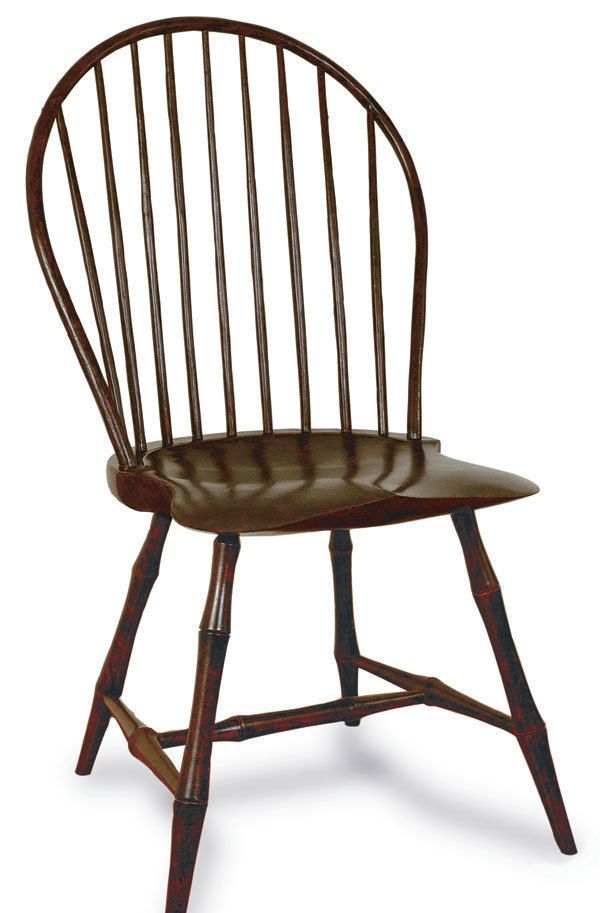A Short History of Chairs
Some little-known facts about chair design and evolution through the ages.

The simple definition of a chair as a movable seat, with a back, for a single person gives no indication of the truly vast range of objects that qualify under this description. Furthermore, few people today are aware of the fact that for much of its history — and chairs go back through classical times to the time of the pharaohs — the chair was reserved for kings, lords, and bishops; ordinary folk sat on backless chests, benches, or stools.
The word chair derives from the Latin cathedra, hence the designation of a church that was the seat of a bishop as a cathedral. Medieval chairs, religious or secular, were large framed affairs often with linenfold panels, and frequently provided with a canopy or tester, typically placed on a dais to further emphasize the importance of the occupant.
The box-like construction of these frame-and-panel chairs became lighter with time, as did another ancient type known as the curule, an X-shaped chair used since Roman times, remarkably similar to many of today’s folding lawn chairs.
Simultaneously, turned chairs, or “throwne” chairs as they were known, became common, partly due to the fact that various trade guilds restricted particular construction techniques such as turning and joinery to separate craftsmen.
Rich carving and polychromatic surface treatments were typical of chairs reserved for important people, but by the mid-17th century, as chairs became more common and very often upholstered, they became both lighter and smaller. Chairs from the Age of Walnut display an open framework, utilizing various systems of stretchers, often combining a great deal of carving with turned and profiled elements.
The French are generally credited with having developed the first truly lightweight and comfortable chairs, from which a whole class of upholstered chairs has developed, including sleeping chairs, armchairs, wing chairs, and a variety of chairs characterized by seat heights more convenient for uses other than at a dining table or desk, such as slipper chairs and lounge chairs.
During the 18th century, before furniture production passed largely into the hands of factories, chairs were made with more curves than before, a process that required considerable material, since curved sections — typically legs and backs — were usually sawn out of the solid. The progress from straight and sometimes turned legs to shapes such as the cabriole and the klismos, and the development of designs not requiring stretchers, but relying instead on techniques such as knee blocks, corner blocks, and wider tenons in substantial rails, can be followed as a logical timeline up to the point where commercial pressures for continual innovation resulted in the riot of revival styles that characterizes the 19th century.
At the same time, various country styles evolved and remain popular, such as the Windsor chair, which originated in Britain and was brought to a peak in America. Windsor chairs are ased on splayed legs held by stretchers, with rush or cane seated chairs, largely turned, and developed into so-called ladderback chairs.
Of all classes of furniture, the chair presents the greatest structural challenges, and this fact has led to a variety of types attempting to meet these challenges in different ways. Chief among these are chairs with adjustable backs, one variety of which, the Morris chair, is closely associated with the Arts and Crafts movement. Other styles include rocking chairs, which address the inherently weakest part of a chair’s construction — the joint between the seat and the back leg, especially when the occupant leans or tilts backwards, the bentwood chair, and the rattan chair.
While the standard, approximately 14-in.-high-seated dining chair and side chair (a dining chair with arms) constitute what is usually thought of when the word “chair” is uttered, varieties classified by use are almost infinite, ranging from folding chairs to desk chairs, writing chairs made with widened arms, library chairs, and convertible ladder chairs.
Graham Blackburn is a furniture maker, author, and illustrator, and publisher of Blackburn Books (www.blackburnbooks.com) in Bearsville, N.Y.







Log in or create an account to post a comment.
Sign up Log in